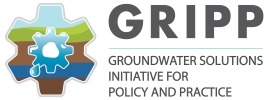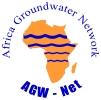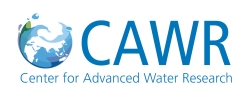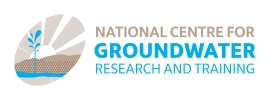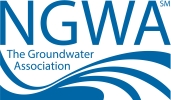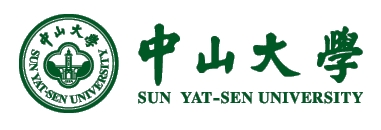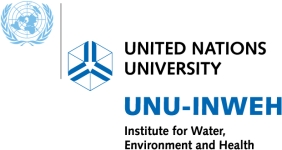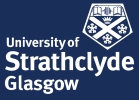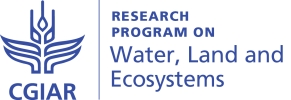Groundwater systems and solar power help clean river water naturally and sustainably
What is riverbank filtration, and how did it start?
In India, wastewater is most often insufficiently treated before it is discharged into surface waters. The removal of resultant pollution loads by drinking water treatment plants, using conventional treatment for the abstracted surface water, is often problematic and costly [1]. An alternative is the natural treatment technique of riverbank filtration (RBF) or bank filtration (a unified term for river and lake bank/bed filtration). Wells are installed in or near the banks of rivers (or lakes). Through pumping, surface water from the stream or lake is induced to flow through the adjacent subsurface towards and into the pumping well, and in the process, harmful bacteria and substances are filtered out (Figure 1). RBF is used worldwide where suitable hydrogeological conditions existsuch as sufficient thickness and hydraulic conductivity of the aquifer, hydraulic connection between the river and aquifer, and good filtering properties of the riverbed and the aquifer As a natural treatment technique, RBF offers high removal rates for pathogens, suspended solids, adsorbable organic compounds and heavy metals [2].
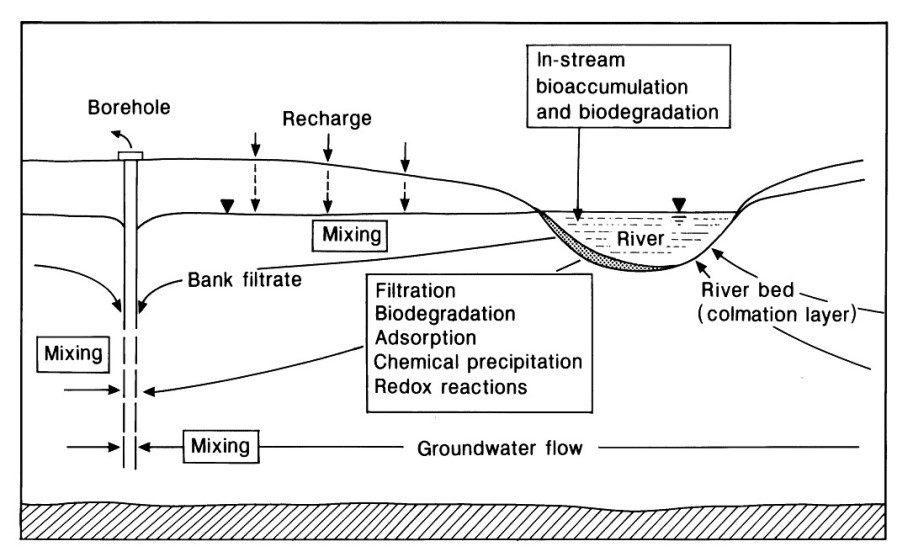
Figure 1. Process of riverbank filtration (source: Hiscock and Grischek 2002[2]).
Despite the proof of concept of RBF in India, its application is still not widespread, and awareness of its advantages and application is generally low. Critical challenges for successful application of RBF include protection of abstraction wells from flooding, and robust and suitable final treatment post abstraction, like disinfection to remove trace levels of pathogens. By means of Indian, German and European Union-funded research projects, an Indo-German RBF Network [10] has been established (presently coordinated as part of the Safe and Lasting Drinking Water Production in India through a Combination of Near-natural and Innovative Treatments (NIRWINDU) project), which brings together higher education and research institutions, and water supply organizations aiming to:
- promote the application of RBF in India for sustainable potable water supply;
- demonstrate the construction of flood-proof RBF wells;
- investigate and optimize the removal of dissolved organic carbon (DOC) and organic micro-pollutants (OMPs) at RBF sites [10]; and
- demonstrate the application of electro-chlorination for disinfection [11].
RBF – providing sustainable, safe and resilient water supply solutions
The north Indian state of Uttarakhand has used RBF for more than 50 years but with relatively simple technology [12]. In Haridwar, considered one of the seven holiest places of Hinduism, more than 68% of the public water supply to the town is produced by 22 RBF wells along the Ganges River. Haridwar is one of the most prominent RBF sites in India because of the challenge to meet the water demand of the large number of pilgrims visiting the city for bathing in the Ganges River. Around 59,000-67,000 m³ of water per day are abstracted from these 22 RBF wells. In addition to the permanent residents (225,000 persons), the water also supplies ~50,000 pilgrims and tourists who visit the city daily [13]. Between 1 and 8.2 million pilgrims have to be supplied with drinking water (22 RBF wells and additional groundwater wells located further away) on specific religious/festival days, such as Ardh-Kumbh, Kumbh and Kanwar Melas, and on certain new moon days throughout the year [13]. Consequently, scientific investigations as well as demonstration and capacity enhancement activities have been conducted continuously since 2005. [3], [5], [10], [11], [12], [13]
These investigations highlight the sustainability of RBF in terms of consistently high removal of pathogens, between 99.9 and 99.999% from the river water. In addition, there is no exceedance of drinking water standards for other drinking water quality parameters (Indian standards and World Health Organization [WHO]) and no observed long-term decline in groundwater levels within the RBF well field (consisting of 22 abstraction wells) other than seasonal fluctuations. Concentrations of DOC and OMPs are extremely low, with some OMPs detected occasionally in river water and even more rarely in well water at extremely low concentrations (< 35 ng/L), posing a low health risk. In 2005, one RBF well (No. 18) was equipped with automatic monitoring equipment, enabling detailed hydrogeological and water quality investigations.
Technology and knowledge on different aspects of RBF have been steadily transferred to the Uttarakhand State Water Supply Organisation (Uttarakhand Jal Sansthan [UJS]). During regular training courses, workshops and conferences in the nearby cities of Roorkee and Dehradun, excursions have been organized to RBF well No. 18 nearly every year since 2006 (Figure 2). These excursions have enabled scientists, water resource engineers and managers, students, and policy and decision makers from different states to acquaint themselves with RBF. In 2009, well No. 18 was designated as a RBF demonstration well for the state. Feedback received from water supply and resource engineers and managers highlights the usefulness of RBF demonstration sites for enhancing the technology’s visibility and for scaling it up. It has been proposed to have at least one RBF demonstration site in each state where RBF can feasibly be applied.
Despite the challenging mountainous terrain, inaccessible location, and frequent natural hazards, Uttarakhand now has 12 urban RBF schemes, developed since 2010.
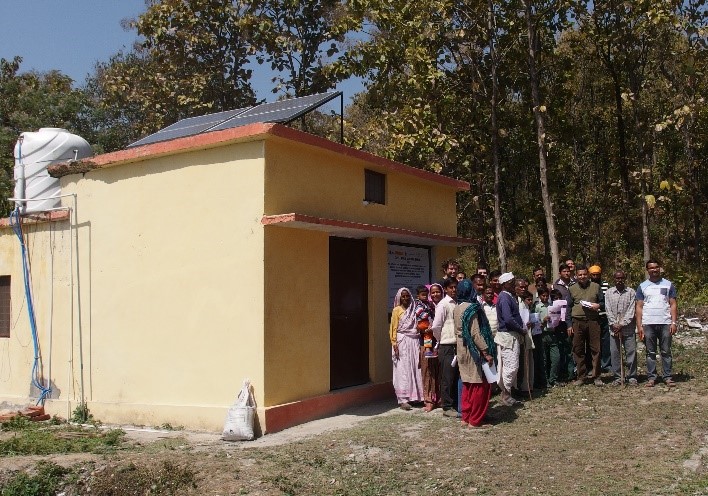
Figure 2. Workshop to create awareness of disinfection by photovoltaic (solar) powered small-capacity inline-electrolysis disinfection systems at an RBF site in Julo village, Uttarakhand (photo: P. Otter/AUTARCON).
What’s next?
To provide safe drinking water year round, tests are being conducted on the coupling of stand-alone inline-electrolysis (“electro-chlorination”) pilot plants of small (20 m³/day) to medium (1,600 m³/day) capacity to RBF wells for disinfection of the water [10], [11]. These systems are supplied with energy from both conventional power (electricity) and solar power (photovoltaic cells). Stakeholders (UJS and village communities) are engaged in the testing, so they can eventually operate the systems (Figures 2 and 3). Data from continuous monitoring of water quality over one year show that no total coliforms or E. coli were present in the drinking water produced. Although such systems involve higher capital investment than do conventional chlorination systems, only minimal maintenance and no hazardous chemicals (e.g., for chlorination) are required. Consequently, operating costs are low, and no risks arise due to storage and transport of chemicals. While both systems offer potential solutions for robust disinfection, the solar-power system is especially suited for inaccessible or remote areas with intermittent or no electricity supply.
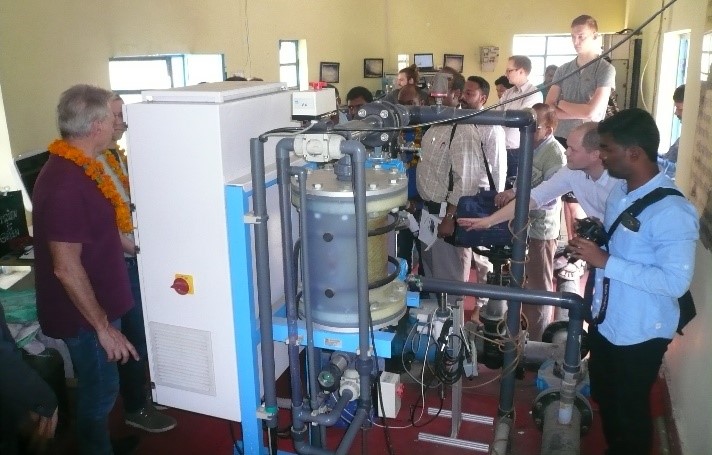
Figure 3. A medium-capacity inline-electrolysis pilot plant is demonstrated to participants at a training course at RBF well No. 18 in Haridwar (photo: HTWD).
In response to the unprecedented and devastating flood of June 2013 in Uttarakhand, a concept for flood-proof RBF wells for India and developing countries was implemented, using predominantly local materials in Srinagar (Uttarakhand) in 2016 and 2017 (Figure 4) [14]. Subsequently, a prototype watertight wellhead was fabricated in Haridwar and built into the flood-proof well chamber. The cost of these flood-proofing measures is only 10% of the cost of constructing a conventional well without these measures.
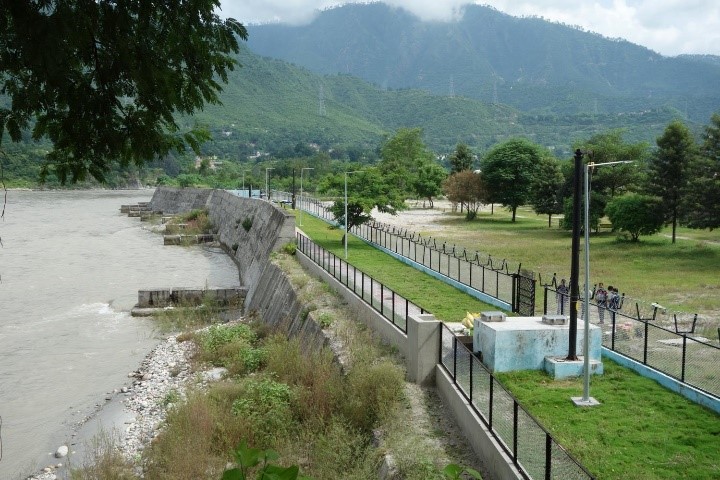
Figure 4. RBF well equipped with a flood-proof well chamber and a watertight wellhead (photo: HTWD).
Recent RBF demonstration and implementation in India show that, although numerous traditional schemes already exist, engineers and well construction firms are not adequately trained and aware of the risks involved, of measures to mitigate pathogenic contamination in groundwater supplies, and of the benefits from RBF. Hence, the importance of RBF demonstration sites to support awareness raising at the fundamental and applied levels for further dissemination of the solution.
[1] Sandhu, C., Börnick, H., Feller, J., Grischek, T., Jacob, T., Kimothi, P.C., Patwal, P.S., Sharma, S. 2014. Report on bank filtration economics and cost-estimates. Saph Pani Project Deliverable D1.4. Available: http://www.saphpani.eu/downloads (accessed August 1, 2018).
[2] Hiscock, K.M.; Grischek, T. 2002. Attenuation of groundwater pollution by bank filtration. Journal of Hydrology 266(3-4): 139-144.
[3] Sandhu, C.; Grischek, T.; Ronghang, M.; Mehrotra, I.; Kumar, P.; Ghosh, N.C.; Rao, Y.R.S.; Chakraborty, B.; Patwal, P.S.; Kimothi, P.C. 2016. Overview of bank filtration in India and the need for flood-proof RBF systems. In: Natural water treatment systems for safe and sustainable water supply in the Indian context – Saph Pani, eds., Wintgens, T.; Nättorp, A.; Elango, L.; Asolekar, S.R. London, UK: IWA Publishing. Pp. 17-38.
[4] Ronghang, M.; Gupta, A.; Mehrotra, I.; Kumar, P.; Patwal, P.; Kumar, S.; Grischek, T.; Sandhu, C. 2018. Riverbank filtration: A case study of four sites in the hilly regions of Uttarakhand, India. Sustainable Water Resources Management 1-15. https://doi.org/10.1007/s40899-018-0255-3.
[5] Kumar, P.; Mehrotra, I.; Gupta, A.; Kumari, S. 2018. Riverbank filtration: A sustainable process to attenuate contaminants during drinking water production. Journal of Sustainable Development of Energy, Water and Environment Systems 6(1): 150-161.
[6] Sprenger, C.; Lorenzen, G.; Grunert, A.; Ronghang, M.; Dizer, H.; Selinka, H-C.; Girones, R.; Lopez-Pila, J.M.; Mittal, A.K.; Szewzyk, R. 2014. Removal of indigenous coliphages and enteric viruses during riverbank filtration from highly polluted river water in Delhi (India). Journal of Water and Health 12(2): 332-342.
[7] Parimalarenganayaki, S.; Brindha, K.; Sankaran, K.; Elango, L. 2015. Effect of river bank filtration from a check dam on geochemical and microbiological composition of groundwater. Arabian Journal of Geosciences 8(10): 8069-8076.
[8] Patil, K.; Boving, T.; D’souza, F. 2016. Illustrating the potential of riverbank filtration technology: Case studies from Southern India. Paper presented at the International Conference on Innovation in Sustainable Water and Wastewater Treatment Systems (ISWATS), April 21-23, 2016, Yashada, Pune, India.
[9] Boving, T.; Choudri, B.S.; Cady, P.; Davis, A.; Patil, K.; Reddy, V. 2012. Acceptance of a riverbank filtration system in rural India. Special Issue on Bank Filtration. Journal of Indian Water Works Association Special issue December 2012: 33-41.
[10] NIRWINDU. 2015. Safe and sustainable drinking water production in India by coupling natural and innovative techniques. https://www.htw-dresden.de/nirwindu
[11] AquaNES. 2016. Demonstrating synergies in combined natural and engineered processes for water treatment systems. http://www.aquanes-h2020.eu/Default.aspx?t=1593
[12] Sandhu, C.; Grischek, T. 2012. Riverbank filtration in India – using ecosystem services to safeguard human health. Water Supply and Technology: Water Supply 12(6): 783-790.
[13] Bartak, R.; Page, D.; Sandhu, C.; Grischek, T.; Saini, B.; Mehrotra, I.; Jain, C.K.; Ghosh, N.C. 2015. Application of risk-based assessment and management to riverbank filtration sites in India. Journal of Water and Health 13(1): 174-189.
[14] Musche, F.; Sandhu, C.; Grischek, T.; Patwal, P.S.; Kimothi, P.C.; Heisler, A. 2018. A field study on the construction of a flood-proof riverbank filtration well in India – Challenges and opportunities. International Journal of Disaster Risk Reduction 31: 489-497.
Thomas Grischek1, Cornelius Sandhu1, Fabian Musche1, Prakash Chandra Kimothi2,3, Sudhir Kumar Sharma2, Philipp Otter4, Wido Schmidt5, Hilmar Börnick6, Pradeep Kumar7, Narayan Chandra Ghosh8, Gopal Krishan8, Devi Prasad Uniyal9 and Rajendra Dobhal9
1 University of Applied Sciences (HTWD), Germany; Email: thomas.grischek@htw-dresden.de
2 Uttarakhand State Water Supply and Sewerage Organisation – Uttarakhand Jal Sansthan (UJS), India
3 Cooperation Centre for Riverbank Filtration (CCRBF), c/o Uttarakhand Jal Sansthan, India
4 AUTARCON GmbH, Germany
5 DVGW Water Technology Center, Germany
6 Technische Universität Dresden, Institute of Water Chemistry, Germany
7 Indian Institute of Technology Roorkee, Department of Civil Engineering, India
8 National Institute of Hydrology (NIH), India
9 Uttarakhand State Council for Science and Technology (UCOST), India






